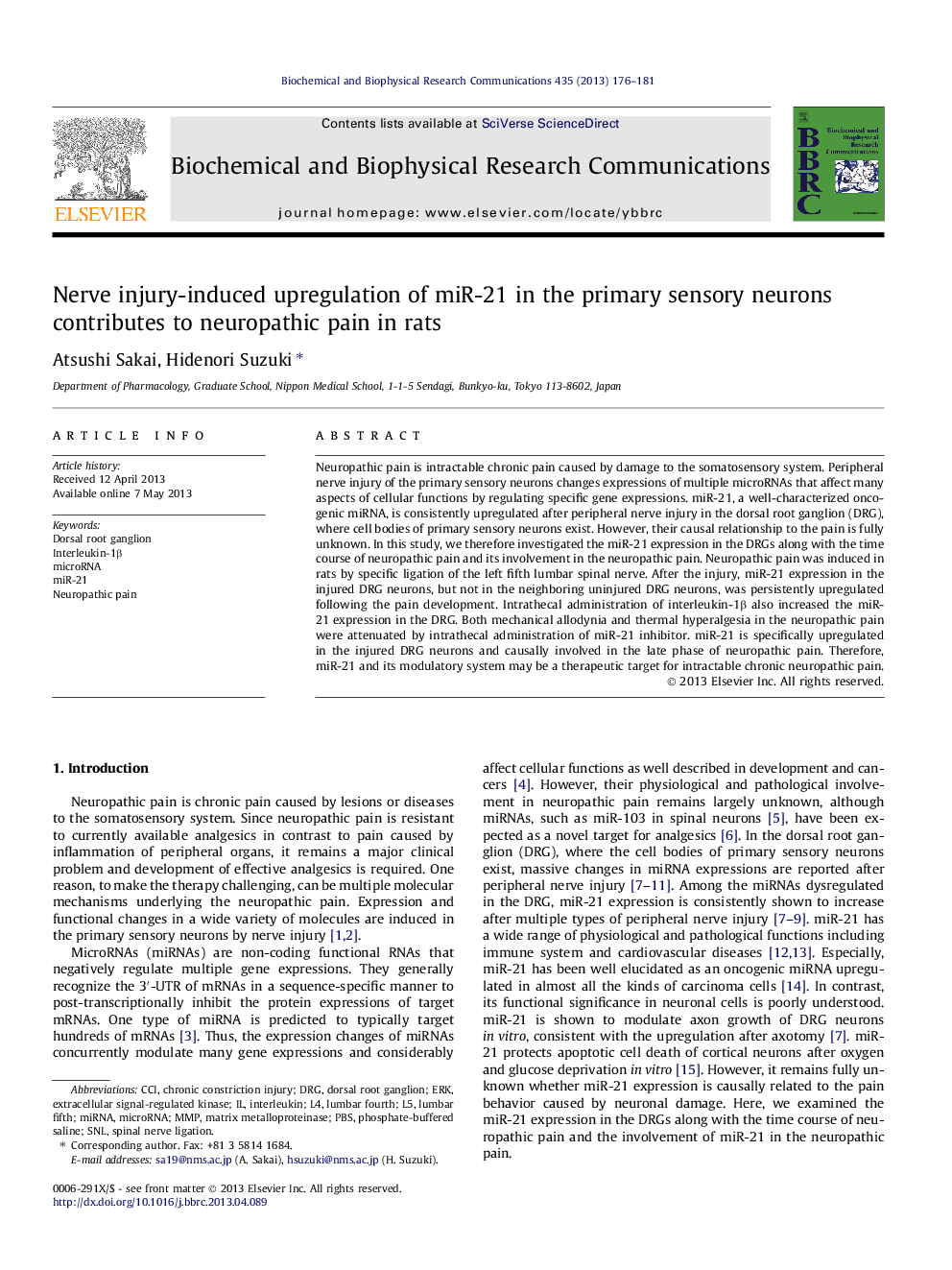| Article ID | Journal | Published Year | Pages | File Type |
|---|---|---|---|---|
| 1928696 | Biochemical and Biophysical Research Communications | 2013 | 6 Pages |
•miR-21 expression is upregulated specifically in the injured DRG neurons.•miR-21 expression is upregulated in the late phase of neuropathic pain.•Intrathecal administration of interleukin-1β increases miR-21 expression.•miR-21 inhibitor partially suppresses the neuropathic pain.
Neuropathic pain is intractable chronic pain caused by damage to the somatosensory system. Peripheral nerve injury of the primary sensory neurons changes expressions of multiple microRNAs that affect many aspects of cellular functions by regulating specific gene expressions. miR-21, a well-characterized oncogenic miRNA, is consistently upregulated after peripheral nerve injury in the dorsal root ganglion (DRG), where cell bodies of primary sensory neurons exist. However, their causal relationship to the pain is fully unknown. In this study, we therefore investigated the miR-21 expression in the DRGs along with the time course of neuropathic pain and its involvement in the neuropathic pain. Neuropathic pain was induced in rats by specific ligation of the left fifth lumbar spinal nerve. After the injury, miR-21 expression in the injured DRG neurons, but not in the neighboring uninjured DRG neurons, was persistently upregulated following the pain development. Intrathecal administration of interleukin-1β also increased the miR-21 expression in the DRG. Both mechanical allodynia and thermal hyperalgesia in the neuropathic pain were attenuated by intrathecal administration of miR-21 inhibitor. miR-21 is specifically upregulated in the injured DRG neurons and causally involved in the late phase of neuropathic pain. Therefore, miR-21 and its modulatory system may be a therapeutic target for intractable chronic neuropathic pain.
